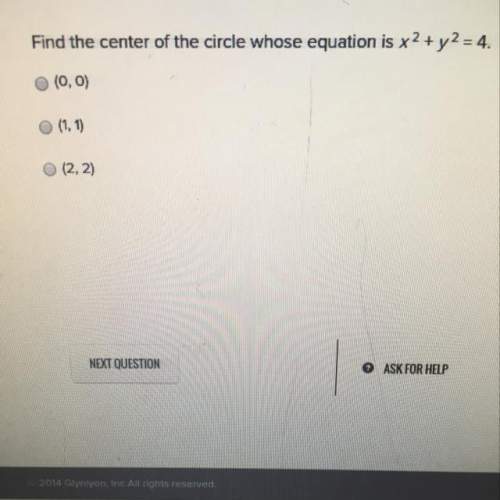
Mathematics, 29.06.2019 22:40 prasiddhipawani
Prove the identity $n r %$r k % = $n k %$n−k r−k % , whenever n, r, and k are nonnegative integers with r ≤ n and k ≤ r, a. using a combinatorial argument. b. using an argument based on the formula for the number of r-combinations of a set with n elements

Answers: 2


Other questions on the subject: Mathematics

Mathematics, 21.06.2019 22:20, jonestmoney381
Jimmy can run 3.5 miles in 20 minutes. how far can ne run in one hour and ten minutes?
Answers: 1



Mathematics, 21.06.2019 23:50, yarrito20011307
4. (10.03 mc) the equation of line cd is y = −2x − 2. write an equation of a line parallel to line cd in slope-intercept form that contains point (4, 5). (4 points) y = −2x + 13 y = negative 1 over 2 x + 7 y = negative 1 over 2 x + 3 − 2x − 3
Answers: 2
You know the right answer?
Prove the identity $n r %$r k % = $n k %$n−k r−k % , whenever n, r, and k are nonnegative integers w...
Questions in other subjects:




Health, 19.03.2021 21:50


Mathematics, 19.03.2021 21:50



Mathematics, 19.03.2021 21:50




